
 Harrisburg public radio station WITF reporter Rachel McDevitt travelled to Pine Grove Furnace State Park to speak with A.T. hikers at the Pine Grove General Store taking the famous "Half Gallon Challenge". We hope they also stopped in to see the Appalachian Trail Museum after they were done. HERE is a link to the feature.
0 Comments
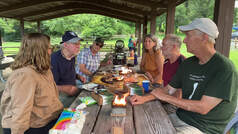 Would you like to learn about the Appalachian Trail and meet lots of friendly folks? Come volunteer with us!! We can use folks to help us man the Museum when it is open. That job is called being a docent. Docents greet visitors at the door, answer questions, sell merchandise, etc. Are you worried you don't know enough to be a docent? We'll pair you with an experienced docent who knows the ropes and will teach you what you need to know. Would you rather work behind the scenes? That's OK. We can use people to help with landscaping, assisting at events, minor carpentry, painting, making videos, technology, and much, much more. We also have special events throughout the year just for volunteers. The Appalachian Trail Museum announces that the 2023 Class of the Appalachian Trail Hall of Fame will be honored at the A.T. Hall of Fame Induction on September 10, 2023. The Induction will begin at 1 pm and will be held at Army Heritage Education Center, located at 950 Soldiers Dr, Carlisle, PA 17013. The induction ceremony will be a free event, but registration is required due to limited space. To register, send an email to atmbanquet@gmail.com The induction ceremony will be one of a full schedule of events taking place during the Hall of Fame weekend. 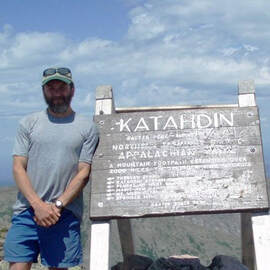 Hawk Metheny, Vice President of Regional & Trail Operations, ATC Hawk Metheny, Vice President of Regional & Trail Operations, ATC The M.C. for the 2023 Banquet will be Hawk Metheny. Hawk is Vice President of Regional and Trail Operations of Appalachian Trail Conservancy. Hawk has served for 33 years working in various levels of Appalachian Trail management and stewardship. Before joining ATC in 2010, Hawk worked for more than 20 years with the Appalachian Mountain Club in multiple backcountry management positions, served multiple consecutive terms on the ATC Board of Directors, and chaired the ATC Stewardship Council. Before his recent promotion, Hawk served as Senior Regional Director of ATC's Northeast region. Hawk thru-hiked the A.T. in 1993 (Hawk-Who-Walks GA—>ME) and has hiked many other sections of the A.T. since. He has thru-hiked the Pacific Crest Trail, the John Muir Trail twice, and has section hiked the Long Trail in Vermont. As previously announced, the 2023 Hall of Fame class honorees are M.J. Eberhart a/k/a Nimblewill Nomad of Olean, Missouri; Lester Kenway of Bangor, Maine; Brian King of Molers Crossroads, West Virginia; and the late Harry Rentschler of Reading, Pennsylvania.
We have received Silver status for transparency by the prominent non-profit rating service GuideStar. Click on the logo below to view our GuideStar profile.
Notice of Museum Annual Membership Meeting
The Appalachian Trail Museum, Inc. will hold its Annual Membership Meeting on Wednesday, May 31, 2023 at 7 pm. The meeting will be held virtually via Zoom. The meeting information appears below. All Museum Members in good standing are invited to attend and will have a vote. The public is also invited to attend. At the Membership Meeting, the Officers and non-officer Directors will be elected. The Board of Directors has nominated the following persons to these positions: For a two year term: President: Larry Luxenberg Vice President: Gwen Loose Non-officer Directors: Ron Bungay, Jim Foster, Ryan Seltzer For a one year term: Treasurer: Jay Sexton Secretary: Bill O’Brien Membership Secretary: Robert Croyle Non-Officer Directors: Noel DeCavalcante, Joe Harold, Kristen Hoke, Dakota Jackson Museum members in good standing may submit alternate nominations for these positions by no later than Wednesday, May 24. Nominations should be submitted by email to info@atmuseum.org. Join Zoom Meeting https://us06web.zoom.us/j/87933624796?pwd=aDVVcitpQVNEeXNuTmhpbmdUenRMQT09 Meeting ID: 879 3362 4796 Passcode: 285517 One tap mobile +16468769923,,87933624796#,,,,*285517# US (New York) +16469313860,,87933624796#,,,,*285517# US Dial by your location +1 646 876 9923 US (New York) +1 646 931 3860 US +1 301 715 8592 US (Washington DC) +1 305 224 1968 US +1 309 205 3325 US +1 312 626 6799 US (Chicago) +1 669 444 9171 US +1 669 900 6833 US (San Jose) +1 689 278 1000 US +1 719 359 4580 US +1 253 205 0468 US +1 253 215 8782 US (Tacoma) +1 346 248 7799 US (Houston) +1 360 209 5623 US +1 386 347 5053 US +1 408 638 0968 US (San Jose) +1 507 473 4847 US +1 564 217 2000 US Meeting ID: 879 3362 4796 Passcode: 285517 Find your local number: https://us06web.zoom.us/u/kbQWKm9YdS The thirteenth class of Appalachian Trail Hall of Fame honorees has been announced by the Appalachian Trail Museum’s Hall of Fame selection committee. The 2023 Appalachian Trail Hall of Fame class honorees are M.J. Eberhart of Olean, Missouri; Lester Kenway of Bangor, Maine; Brian King of Molers Crossroads, West Virginia; and the late Harry Rentschler of Reading, Pennsylvania. 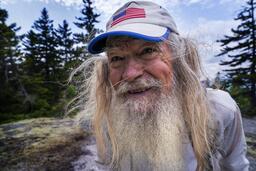 Nimblewill Nomad (courtesy AP) Nimblewill Nomad (courtesy AP) M.J. Eberhart is universally known within the trail community as Nimblewill Nomad. By age 61, M.J. had lived a full life, born in New York State, growing up in the Ozark Highlands of Missouri and setting up a successful practice as an optometrist in Florida. Then one day, he took a walk. And he kept on walking, from the Florida Keys up the eastern seaboard to the northern tip of the Gaspe peninsula in Canada, 4,400 miles. Over the next 15 years, he hiked 34,000 miles including the Triple Crown of long-distance trails (A.T., Pacific Crest and Continental Divide), and the rest of the 11 national scenic trails. Nearing his 75th birthday, he vowed to hang up his hiking boots. Nimblewill’s friends thought this was unlikely to happen. They were right. In 2021, at age 83, the Nomad started the A.T. yet again, for a third time. In November, 2021, he finished the Trail, and became the oldest known person to hike it in one year. It was fitting that Nimblewill was met at the end by his friend, Dale “Greybeard” Sanders, the previous record holder. The two Trail champions toasted each other with glasses of champagne. Is the Nomad done hiking? No one who knows him would bet that he is. 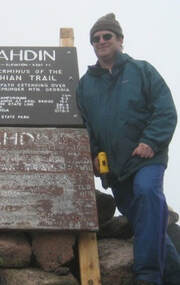 Lester Kenway (courtesy ATC) Lester Kenway (courtesy ATC) Every hiker who summits Mount Katahdin, the northern terminus of the A.T., knows the iconic sign that graces the mountaintop. Lester Kenway is one of the volunteers who put that sign in place. Although he’s climbed Katahdin three times with that sign, it represents just a small part of Lester’s volunteer efforts on behalf of the A.T. Lester’s first trail crew experience was in 1972 as a member of the Bates Outing Club. Now a member of ATC and the Maine Appalachian Trail Club (MATC) for more than 45 years, Lester has chaired the sign committee, managed MATC’s Trail crew program, built shelters and trails and served as MATC’s President. Lester says his goal is to “build things once, and build them to last,” primarily using stone. He was a pioneer of using the Griphoist and other methods for moving stone that are now widely used on the A.T. and other trails. The late Bob Proudman called Lester “…the quintessential crew leader, always prepared with decades of trail-building experience”. Lester says building and maintaining trails “creates something good for people and something good for the earth.” 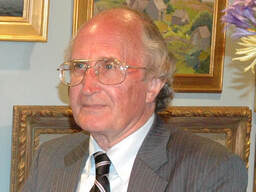 Brian King (courtesy ATC) Brian King (courtesy ATC) Brian B. King of Molers Crossroads, W.Va., began work for ATC in June 1987, after eight years working as a volunteer on the Appalachian Trailway News and the board’s public-relations committee. For decades, he was responsible for ATC’s publications, sales program and the archives. He is the author of the award-winning Trail history, The Appalachian Trail: Celebrating America’s Hiking Trail. Brian is widely considered to be the Trail’s greatest living historian. Brian retired from ATC in 2022. A native of Washington, D.C., Brian is a graduate of Georgetown University, and previously attended the University of the South and Northwestern University’s National Journalism Institute. Prior to joining ATC, Brian worked for the Charleston (S.C.) Evening Post, the Colorado Springs Sun, the Associated Press, the U.S. Department of Agriculture and the Ford Foundation. 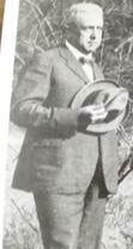 Harry Rentschler (courtesy A.T. Museum) Harry Rentschler (courtesy A.T. Museum) Harry Rentschler grew up in southeastern Pennsylvania with a love of the outdoors. A physician practicing in Reading, PA, Dr. Rentschler and some friends founded the Blue Mountain Eagle Climbing Club in 1916. That name came from a trek that Rentschler led up the mountain to find an eagle’s nest. A decade later Dr. Rentschler learned of Benton MacKaye’s dream to create a trail stretching through the wilderness from Georgia to Maine. Under his leadership, BMECC stepped up to build 102 miles of the A.T. from the Susquehanna to the Lehigh River. Dr. Rentschler led the work trips during the five years that it took to build the Trail, using his 1917 Physician’s Memorandum to record notes about these trips. Rentschler’s property in the Reading suburb of Bernville became the headquarters for BMECC’s construction of their portion of the A.T. and later maintenance projects. Two A.T. shelters, Eagles Nest and Rausch Gap, were constructed there and then transported to the Trail. Dr. Rentschler willed his property to BMECC and today the Rentschler Arboretum is the headquarters of that club, by far the oldest one based in the Keystone State maintaining the Trail. Twelve classes have previously been elected to the A.T. Hall of Fame. The Charter Class, elected in 2011, comprised Myron Avery, Gene Espy, Ed Garvey, Benton MacKaye, Arthur Perkins and Earl Shaffer. Members of the 2012 class were Emma Gatewood, David Richie, J. Frank Schairer, Jean Stephenson and William Adams Welch. The 2013 Class was Ruth Blackburn, David Field, David Sherman, David Startzell and Eddie Stone. The 2014 Class was A. Rufus Morgan, Chuck Rinaldi, Clarence Stein and Pamela Underhill. The 2015 Class was Ned Anderson, Margaret Drummond, Stanley Murray and Raymond Torrey. In 2016, Maurice J. Forrester, Jr., Horace Kephart, Larry Luxenberg and Henry Arch Nichols were inducted. The 2017 Class was Harlean James, Charles Parry, Mildred Norman Ryder and Tillie Wood. In 2018, William Kemsley, Jr., Elizabeth Levers, George Masa and Bob Peoples were elected. Members of the 2019 Class were Jean Cashin, Paul Fink, Don King and Bob Proudman. The 2020 Class was Chris Brunton, Thurston Griggs, Warren Doyle and Jim Stoltz. Harvey Broome, Stephen Clark, Thomas Johnson and Marianne Skeen comprised the 2021 class. The 2022 class was Jim & Molly Denton, JoAnn & Paul Dolan, Laurie Potteiger and Tom Speaks. The 2023 Hall of Fame Class will be honored at the Hall of Fame Induction event on Sunday, September 10, 2023. Additional details will be announced soon. 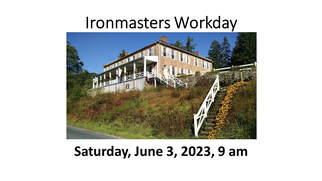 For our Spring work day of 2023, we will concentrate on getting the outside grounds in shape. We will remove brush, etc. accumulated from the winter, clean out planting beds, trim bushes and spread mulch. In case of inclement weather, we will postpone to another date. Wear work clothing suitable for outside work. If you have them, bring gloves, shovels, rakes, gardening tools, etc. If not, they will be provided. Snacks & drinks will be provided, but bring your own if you wish. To sign up for the work day, follow this link: https://signup.com/go/cOQtCiH
Dear Friends of the A.T. Museum: The Museum established the Appalachian Trail Hall of Fame in 2011. Since then, legends of the Trail have been honored by election to the Hall of Fame each year. The 2023 Class will be announced later this year. From 2011 through 2019, each Hall of Fame class has been honored at an A.T. Hall of Fame Banquet. We had to cancel the 2020 Banquet and we haven’t been able to hold one since then. We would like to reinstitute the annual tradition of a Hall of Fame Banquet. But, to do so, we need a Banquet Committee to organize and run the Banquet. Jim Foster, who organized the first nine Banquets, is willing to assist the Committee with the planning of the next Banquet. If you feel led to be a member of the Committee, contact us at atmbanquet@gmail.com |
AT Museum NewsArchives
April 2024
Categories
All
|

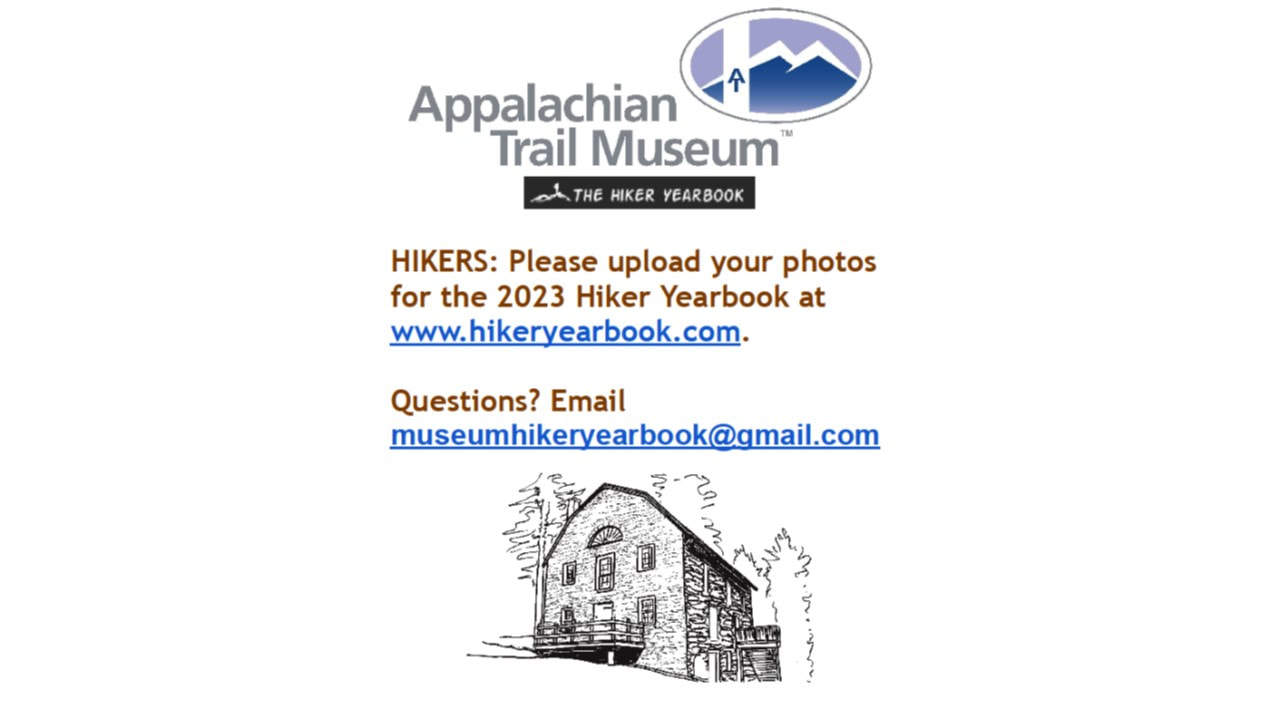
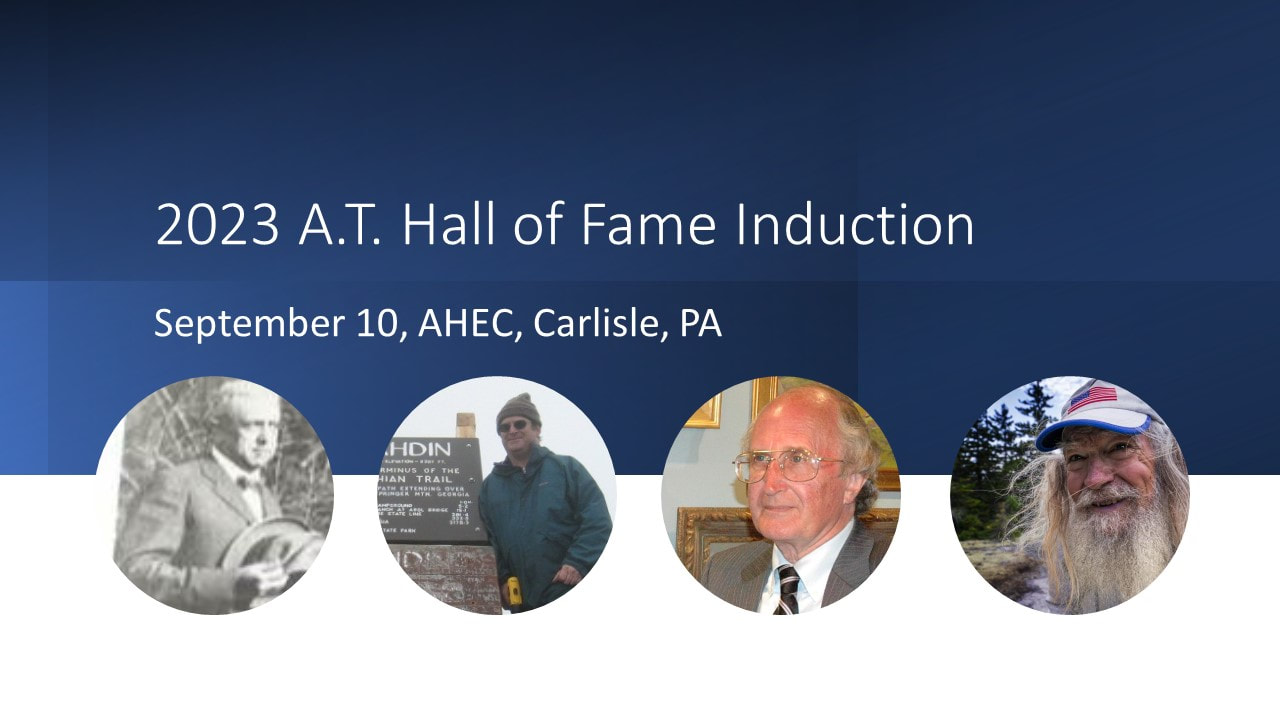
 RSS Feed
RSS Feed